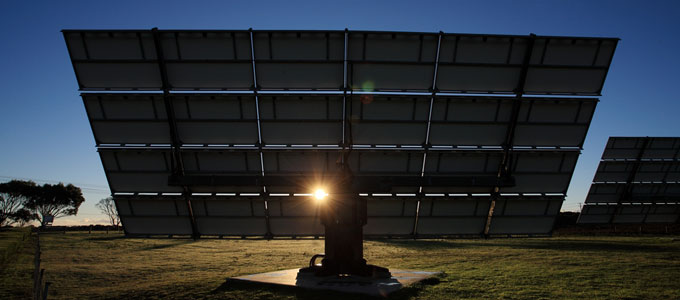THOUGHT LEADERSHIP
‘Sundown, sunrise’ or ‘reform or die’?
The Grattan Institute’s recently released report ‘Sundown, sunrise’ observes that household solar PV will soon be cost-competitive under existing tariff structures, while at the same time bemoaning the subsidies it has attracted, and the uneven burden of these subsidies on all network users.
But it’s important to read beyond the executive summary.
Knee-jerk reactions
The report has been criticised for headlining the imbalance between the costs and benefits of household solar. Critics argue that the Grattan Institute’s model is too narrow, and doesn’t account for the other benefits of the high levels of subsidies to date.
But focusing our attention solely on the details of this aspect of the report may be crowding out some of its more important findings.
A fair share
That we now have a credible and viable solar PV industry in Australia shows the success of the subsidy arrangements that currently exist. The retirement of these subsidies means that they will play less of a role in the future but the impact of PV will only grow. Dwelling on this specific issue is a distraction and almost irrelevant for future policy concerns.
Ultimately, we want everyone to pay their fair share.
Former high feed-in tariffs or high subsidies for solar PV installation led to solar customers gaining either a disproportionate or overstated amount of the value created by their solar installation. At the same time, the rise of solar PV has exacerbated the effect of declining energy use on the economics of the grid.
In the long run, we must try to address both of these issues (and a few more besides!) if we are to make the best use of these emerging technologies without wastefully underutilising existing network infrastructure and generation capability.

Looking into the future
If we accept that past arrangements had unintended consequences, we can turn our attention to the insights the report contains about the possibilities for achieving better future outcomes. I personally don’t believe the electricity industry is incapable of adapting (more on this here).
The report’s insights about the future of the network, the solar industry and energy storage lead to the following conclusions:
- Existing tariffs do not properly account for the network costs and network benefits of distributed solar PV and so some tariff reform is needed to address this.
- Existing regulations may not create optimal outcomes for networks or network customers.
- Network planning processes don’t always fully consider distributed generation or non-network solutions as potentially beneficial alternatives to replacing assets or augmenting the network.
The report offers some early suggestions about how tariffs, planning rules, asset valuation and regulation should be adjusted to address the looming challenges, avoid further entrenchment of disparity between costs and benefits and possibly harness some untapped benefits from solar and storage.
This is the time to focus our thinking on how we can correctly incentivise distributed generation, large-scale generation, loads and network developments… because we know that today’s arrangements won’t be right for tomorrow.
About the author
Donald Vaughan is Entura’s Technical Director, Power. He has more than 25 years of experience providing advice on regulatory and technical requirements for generators, substations and transmission systems. Donald specialises in the performance of power systems. His experience with generating units, governors and excitation systems provides a helpful perspective on how the physical electrical network behaves and how it can support the transition to a high renewables environment.
MORE THOUGHT LEADERSHIP ARTICLES
May 28, 2015






